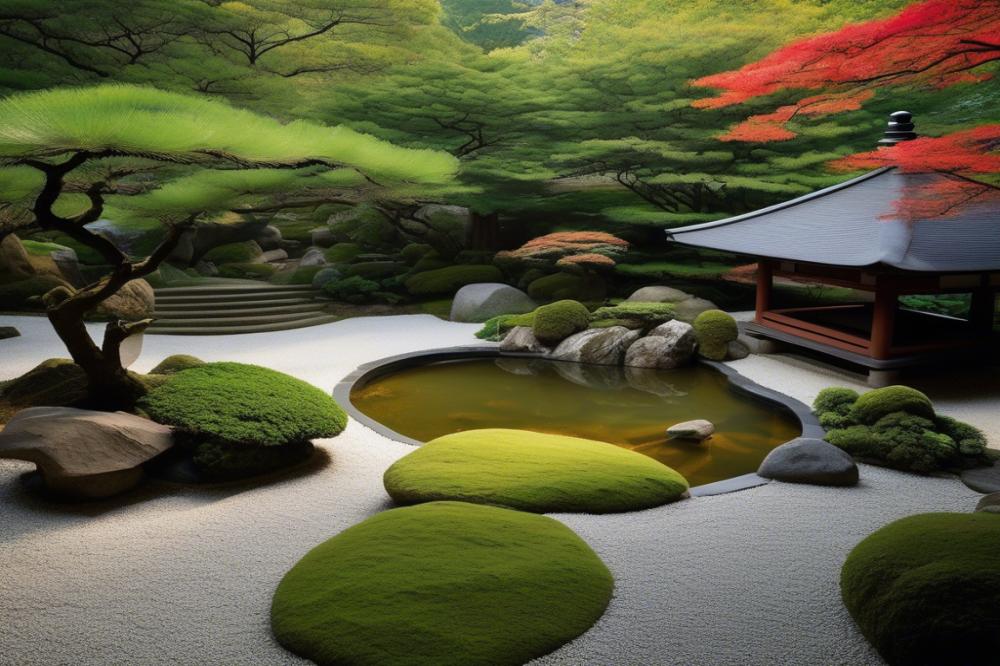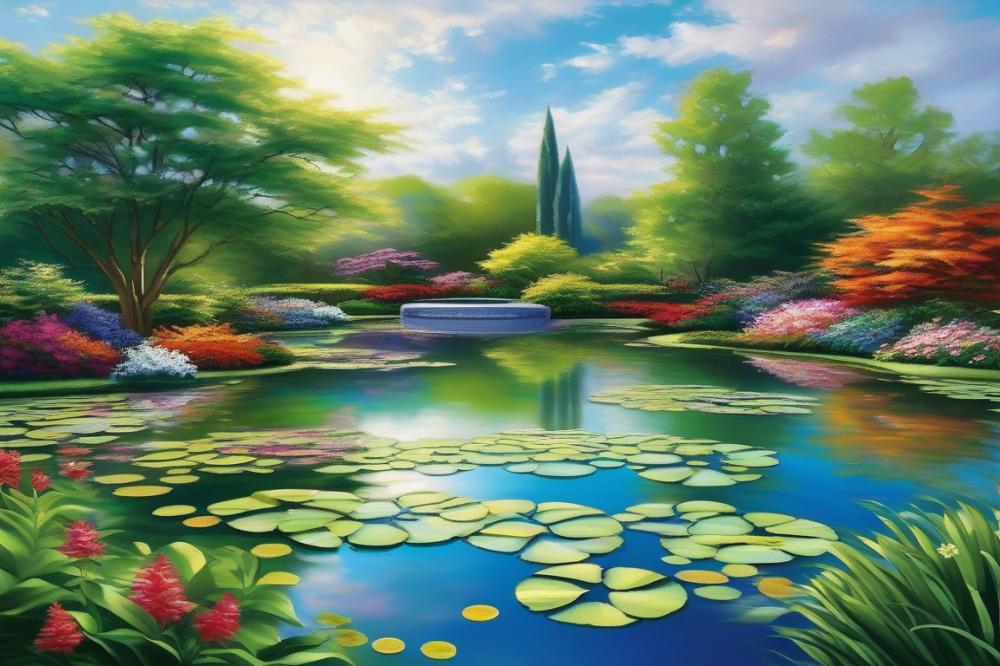Exploring Japanese gardens
Japanese gardens are a captivating aspect of landscaping that beautifully blends nature with art. These serene spaces invite individuals to enjoy peace and contemplation. A focus on aesthetics defines them. Elements like stone lanterns, water features, and bonsai trees create enchanting environments. Each component plays a significant role in shaping the overall scene.
Traditional design principles emphasize harmony with nature. Elegance and simplicity guide most layouts. The arrangement of stones and plants encourages a flow that mirrors the beauty of the natural world. Instead of overwhelming colors, gardens often feature muted tones. This approach promotes a feeling of tranquility, essential for relaxation and meditation.
Water features serve as pivotal elements in many gardens. The gentle sound of flowing water induces calm. Whether it’s a pond or a small stream, the presence of water influences the atmosphere profoundly. Such settings offer an escape from the rush of daily life, fostering mindfulness.
A unique aspect of these spaces is their cultural significance. They reflect values deeply rooted in Japanese philosophy. The art of creating a Zen garden, for example, highlights the union of aesthetics and spirituality. Gardens invite visitors to pause and reflect, making them vital sanctuaries in a bustling world.
Understanding Japanese Gardens
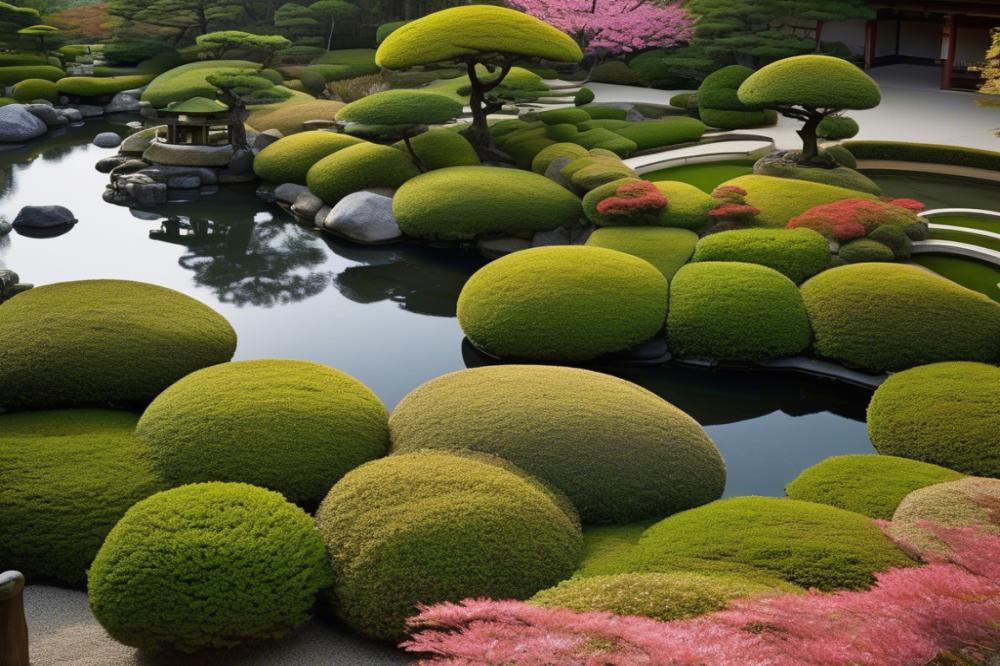

Japanese gardens are fascinating creations that combine art with nature. They reflect a cultural commitment to beauty and harmony. These landscapes often depict miniature representations of natural scenery. Their design emphasizes balance, tranquility, and aesthetics.
The history of these gardens spans centuries, rooted deeply in Japanese culture. Initially influenced by Chinese garden styles, they evolved to express unique Japanese concepts. Traditional design features elements such as water features, stone lanterns, and carefully placed plants. Each component serves a purpose, enhancing the overall atmosphere.
One popular type of Japanese garden is the rock garden, also known as karesansui. It uses gravel, sand, and stones to symbolize water, mountains, and other natural elements. This minimalist approach invites meditation and reflection, allowing visitors to connect with nature. Small raked patterns in the gravel often mimic waves, creating a serene visual experience.
Bonsai trees are another essential aspect of these gardens. They represent patience and the art of cultivation. Growing bonsai takes time and skill, embodying the philosophy of mindfulness in landscaping. Moreover, each bonsai tells a story, giving a sense of life to the garden.
Water features also play a significant role. Ponds, streams, and waterfalls bring movement and sound, enhancing the sense of tranquility. These elements attract wildlife and create an ecosystem that thrives within the garden. The soothing sounds of flowing water can be incredibly relaxing, enhancing the overall experience.
Moreover, stone lanterns add both beauty and function. These fixtures illuminate paths and guide visitors through the gardens. Customarily made from natural stones, they integrate seamlessly into the landscape. Over time, they have become symbols of hospitality and welcome.
Every design choice in a Japanese garden carries a deeper meaning. This approach fosters a connection to the environment and encourages self-reflection. It invites individuals to pause and appreciate the beauty around them. The gardens resonate with the essence of Japanese culture and offer a sanctuary from the noisy world.
Rock Garden Types
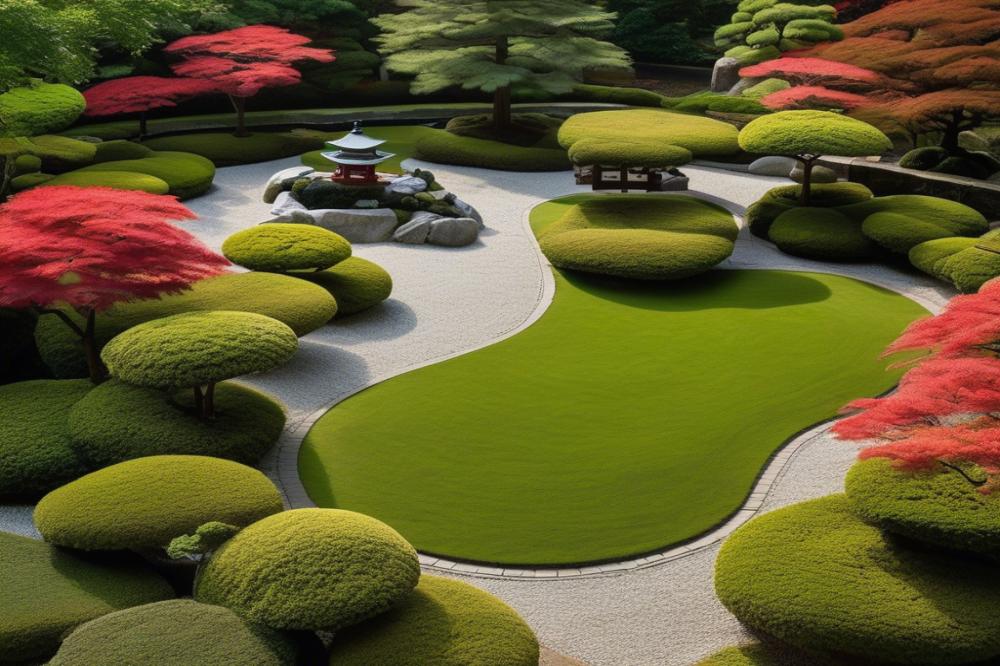

Japanese gardens often feature various styles of Rock gardens. One of the most recognized is the Zen garden, which focuses on minimalism and meditation. In these spaces, rocks symbolize mountains, showcasing the beauty of nature. The careful arrangement creates a sense of tranquility and harmony.
Graceful design plays a key role in Rock gardens. Rocks are not randomly placed; each selection is intentional. The use of stone lanterns adds an extra layer of aesthetics. They often illuminate pathways while complementing the natural landscape. These elements work together to enhance the overall beauty of the garden.
Another type of rock garden imitates riverbeds or coastal scenes. Small stones mimic pebbles found in streams. Using gravel to represent water surfaces creates a feeling of movement and fluidity. This design allows visitors to engage with nature on a different level. Some gardens incorporate water features like ponds, reinforcing the connection to a natural setting.
Incorporating bonsai trees into rock gardens establishes a dialogue between small plants and the vastness of stone. The contrast between delicate leaves and strong rocks symbolizes balance. Traditional design principles are evident in how these elements interact. Each choice reflects a deep-rooted culture that values simplicity and beauty.
Landscaping becomes a thoughtful expression of mindfulness in these gardens. Each rock placement can prompt reflection or meditation. Visitors often find peace as they stroll along pathways lined with carefully chosen stones. The meditative quality of these gardens invites inner calm and contemplation.
Techniques in Rock Garden Design
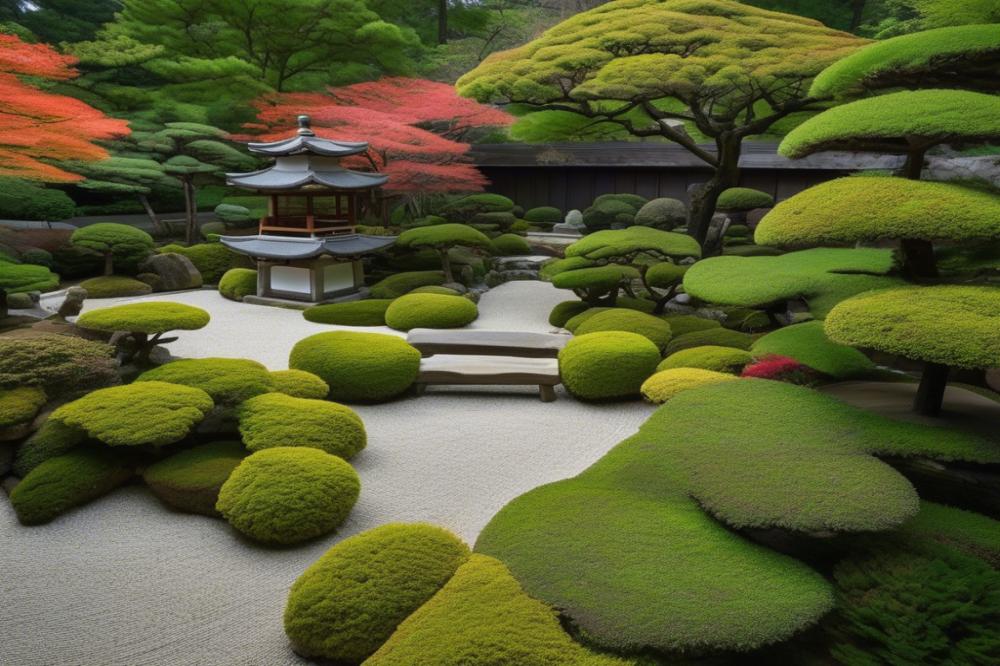

Creating a rock garden requires careful consideration of several techniques. Stone placement plays a crucial role in determining the overall aesthetic of the space. Rocks should be arranged to reflect natural formations found in landscapes. Each stone can serve as a focal point, drawing the eye and enhancing the design.
Gravel raking is another important technique. This process creates patterns that evoke flowing water or rippling sand. Raked gravel also helps in achieving a sense of movement within your garden. Maintaining these patterns can be a meditative practice in itself, promoting inner tranquility.
When designing a rock garden, symmetry and balance should not be overlooked. These elements contribute to the overall harmony of the garden, inviting visitors to pause and reflect. Placing stone lanterns thoughtfully enhances this balance, offering both light and decoration. Water features can add another dimension. The sound of flowing water creates a peaceful atmosphere, perfect for relaxation.
Many gardeners also incorporate bonsai into their designs. This traditional art form showcases the beauty of nature in a compact form. Bonsai trees complement the rocks and gravel, adding vertical interest. Together, these elements promote the culture of mindfulness and appreciation for simplicity.
In summary, achieving tranquility in a rock garden involves thoughtful techniques. Each choice—from stone placement to the arrangement of plants—affects the garden’s harmony. When done well, a rock garden becomes a serene space ideal for meditation and reflection.
Incorporating Key Elements
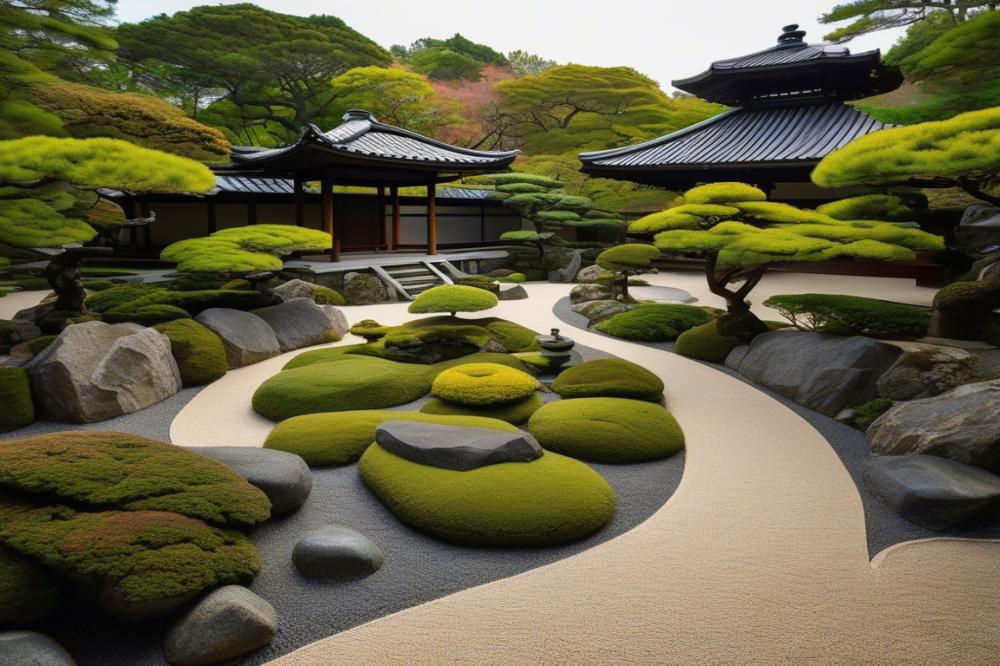

Japanese gardens are famous for their calming landscapes. Certain components play a crucial role in achieving this tranquility. Stone lanterns, water features, and bonsai are among the most significant elements. Together, they create a space that invites meditation and reflection.
Stone lanterns serve both functional and decorative purposes. These structures illuminate walkways at night. They often symbolize the connection between humans and nature. Their unique designs reflect traditional Japanese aesthetics and add charm to the garden. Positioned carefully, they guide visitors through the space.
Water features bring life to the surroundings. Ponds, streams, and fountains create soothing sounds. The gentle flow of water enhances the peaceful atmosphere. Such elements also attract wildlife, enriching the ecosystem. This connection with nature adds depth to the garden’s design.
A significant part of landscaping in these gardens is bonsai. These miniature trees represent patience and artistry. Pruned meticulously, each bonsai tells a story of growth and resilience. Their presence adds a touch of elegance. Furthermore, they serve as focal points, drawing the eye and inviting contemplation.
Incorporating these elements into garden design is more than aesthetic appeal. Each component holds cultural significance, reflecting centuries of tradition. This respect for nature and beauty intertwines with spirituality. Visitors often find solace in the carefully curated landscape, feeling a sense of heritage and connection.
Creating a Tranquil Space
Designing a peaceful environment is crucial for anyone wanting to bring elements of Japanese gardens into their backyard. A thoughtful approach to landscaping can lead to serenity and calmness. Begin by considering the layout of the space. Flow is vital in traditional design; curves and gentle lines invite relaxation. Avoid sharp angles that disrupt the natural flow of the garden.
Selecting the right plants contributes significantly to the overall aesthetics. Incorporate evergreens like junipers or pines for a year-round lush feel. Bonsai trees are a perfect choice as they embody nature’s beauty in miniature form. Other plants, such as azaleas and cherry blossoms, add color and seasonal interest. Each plant should serve a purpose, creating a sense of balance and harmony.
Rocks also play an important role in achieving tranquility. Use stone lanterns to guide the eye and enhance the garden’s mystique. Boulders can act as focal points, emphasizing the garden’s strength and stability. Arrange them in a natural manner, as if they have always been a part of the landscape. This helps create an authentic cultural experience.
Water features are essential for promoting a meditative atmosphere. Whether it’s a koi pond or a small fountain, the sound of moving water soothes the mind. Aim for a design that reflects simplicity. Ensure it fits harmoniously within the garden’s layout. Add some aquatic plants for beauty and tranquility.
Including walking paths can encourage mindfulness and further promote relaxation. Gravel paths, bordered by stones or plants, invite gentle exploration. As you stroll through your space, allow time for reflection and contemplation. Every detail should foster a connection to nature.
Creating a tranquil space is more than just visual appeal. It requires careful thought about how each element interacts with others. From the choice of plants to the arrangement of stones, every aspect should promote meditation and relaxation. Combining these elements will lead to a beautiful and serene garden experience.
Embracing Beauty and Culture through Japanese Gardens
Japanese gardens play an important role in enhancing natural beauty and supporting cultural heritage. They reflect the rich traditions of Japan and promote peaceful environments. Visitors often find that these gardens offer a refreshing escape from everyday life. Such spaces invite contemplation and provide a sense of tranquility.
Incorporating these landscapes into personal properties can elevate one’s outdoor experience. Gardens create a connection with nature that many people find deeply fulfilling. They can serve as not just ornamental features but as places for relaxation and reflection. Individuals who embrace this style of landscaping can enjoy unique benefits, such as reduced stress and a greater appreciation for their surroundings.
Understanding the significance of these gardens goes beyond their aesthetic value. They symbolize harmony and balance, principles that many desire in their own lives. Whether planting serene ponds or carefully pruning bonsai trees, every element in a Japanese garden is thoughtfully chosen. This intentional design encourages mindfulness and community connection.
Ultimately, introducing such elements into personal landscapes can transform ordinary spaces into extraordinary ones. The beauty experienced through careful design can inspire a deeper connection to nature. As people integrate features of Japanese gardens into their homes, they also contribute to a broader appreciation of cultural heritage. The peaceful settings invite individuals to slow down, breathe, and enjoy the moment. In doing so, they foster a deeper understanding of both nature and their internal journeys.

